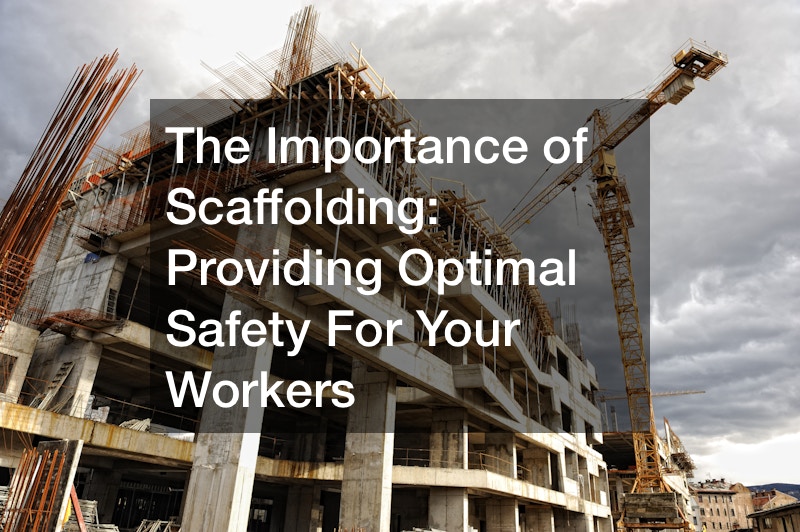
Scaffolding is generally safer to use in construction as opposed to using ladders or any other unsteady equipment on the site. It is, however, also important to note that using a scaffold does not render you entirely risk-free. When the utmost attention is not paid to the scaffold renting process or education of workers and employees on site on scaffold safety, accidents can still occur.
There is a wide range of scaffolding that you can purchase or rent from local scaffold rentals, but your choice will ultimately depend on the type of project you and your team are embarking on.
For example, trestle scaffolding is used mostly by bricklayers or painters to carry out finishing work. Its trestle extension configuration feature also makes it able to accommodate two painters or bricklayers at a time, making it a great choice to minimize time loss on projects. On the other hand, narrow scaffolding, which happens to be the most common type of scaffolding, allows one worker on one side at a time.
Buck scaffolding consists of a number of scaffold building tools that help enhance the safety of workers on the site.

In the construction fields, scaffolding is necessary for the general safety of workers and passing pedestrians. Work equipment provided by employers such as scaffolds, ladders, and other safety gear protects employees from the risk of serious injury or death, which may occur should a worker fall six feet or more above lower levels.
Scaffolds are temporary structures utilized in a building project to create support for workers who may be moving around the structure making necessary repairs or additions. Wooden scaffolding was used up until 1922, but today a steel and aluminum scaffold is the norm. Steel allows for elasticity and strength, which ensures durable scaffolds that reduce cracking and support heavier loads.
Depending on the type of project, three types of scaffolding can be used including supported scaffolding, suspended scaffolding, and rolling scaffolding.
Supported scaffolding
Supported scaffolding is a common scaffold technique used in construction sites. Built directly from the ground, supported scaffolding can be given additional support if necessary in the event of heavier loads and is one of the easiest structures to build.

Suspended scaffolding
Suspended scaffolding is when scaffold platforms are suspended from the roof of a building using ropes. This type of scaffolding is best used when building a base is impractical or if a base may be hazardous to the structure when heavy weight is applied, which may be the case with aluminum scaffolds.
Rolling scaffolding
Rolling scaffolds, like supported scaffolds, have a base but utilize castor wheels in the event of the building needing further work in additional areas. The wheels, of course, lock but are able to be unlocked at any time should the worker need to move the scaffold to the new work environment.
Importance of scaffold materials
It’s important to determine the necessary scaffolding materials for your particular project in order to ensure the safety of your workers. For instance, tube and clamp scaffolds are compatible with typical frames in scaffold towers and are virtually easy to assemble. Tube and clamp scaffolds can either be made from aluminum or steel depending on the project they’re needed for and only four parts of tube and clamp scaffolds are necessary for any assembly. Additionally, the steel tubing of tube and clamp scaffolds is durable and lightweight and the tubing and clamps are galvanized, meaning they last longer because they reduce rust and corrosion.
Scaffolds should be fully planked with guardrails and flooring, but workers should additionally wear safety belts to avoid harmful falls, which may otherwise cause injury or death. Despite the fact that scaffolding is only a temporary structure made give support while working on the construction of a building project, they’re necessary structures to protect the health and life of your workers.